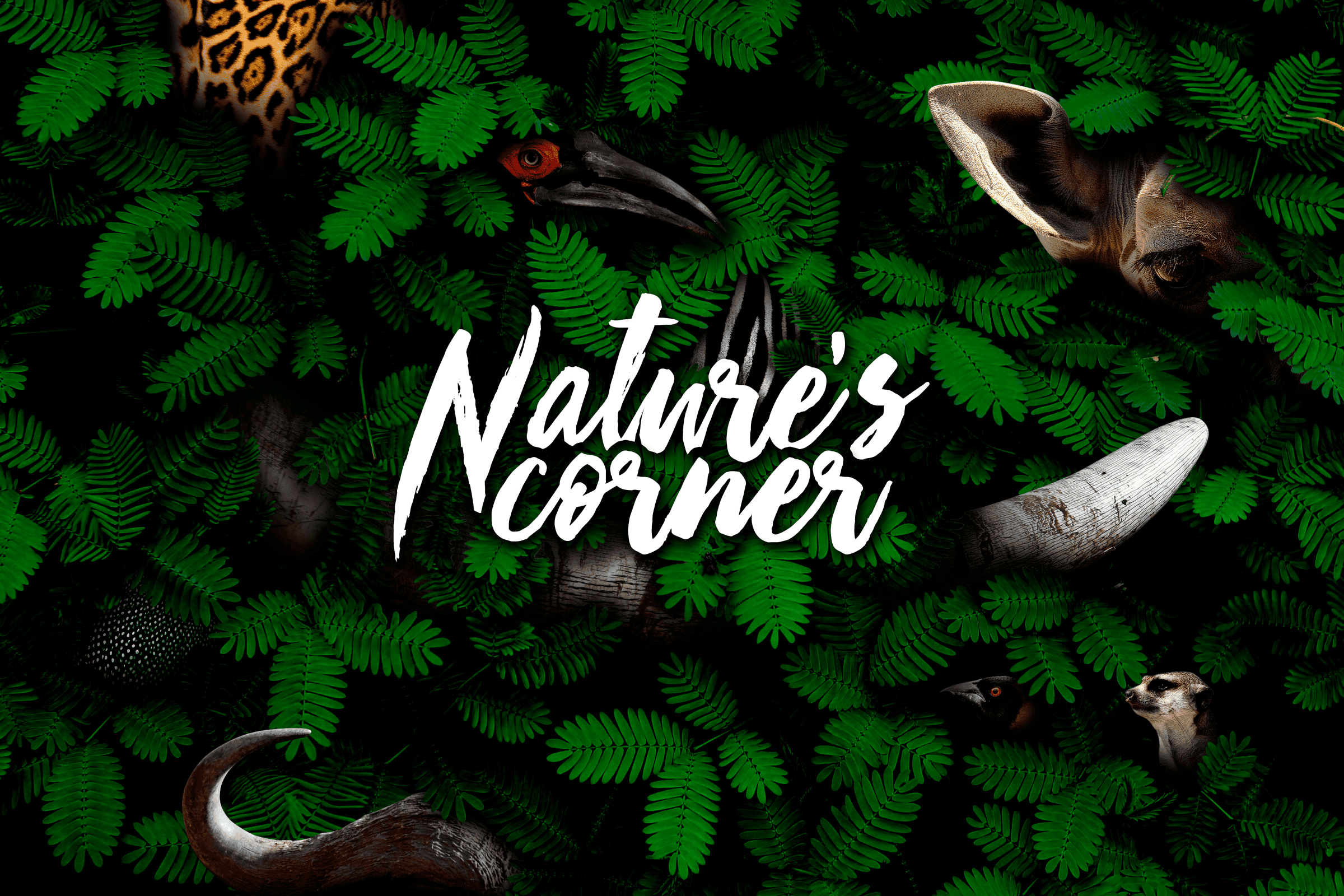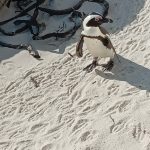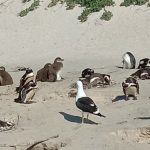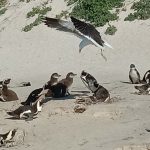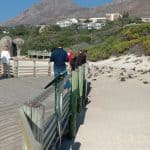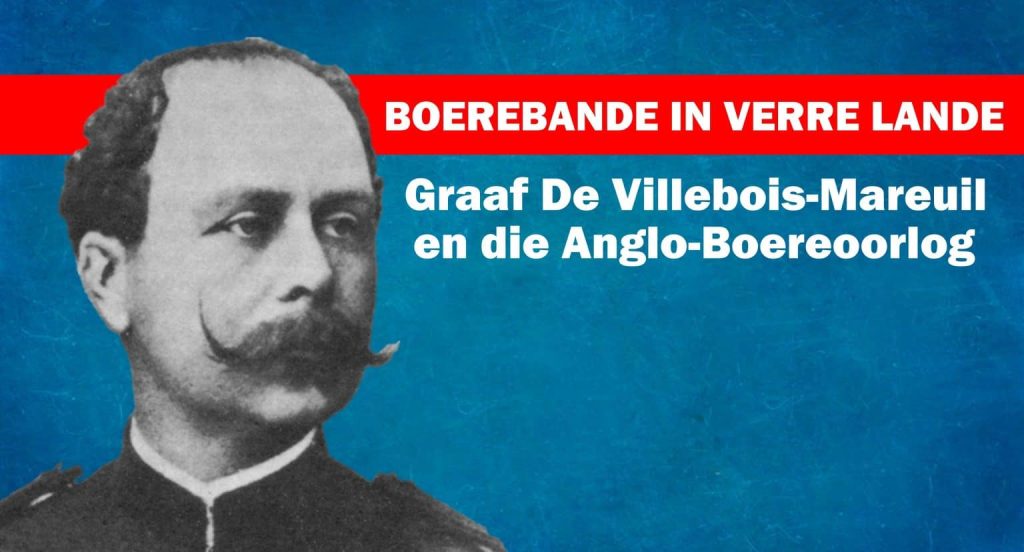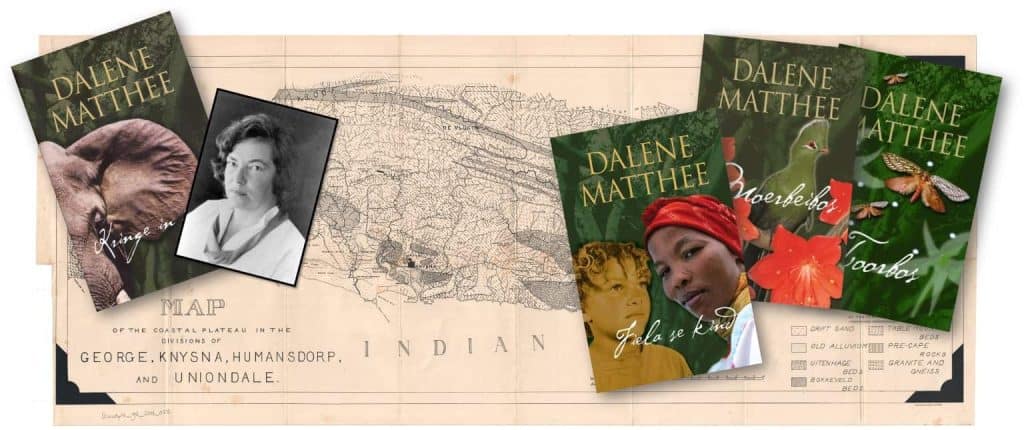This time we give Katie and André’s Two-V Productions a break and share some photos that Alana took of the African or Jackass penguins (Spheniscus demersus) at Simon’s Town last week with you.
The penguin colony at Boulders and Foxy Beaches is world famous. From just two breeding pairs in 1982, this group has grown to about 2 200. Some construct nests under the shrubs along the beach or on the beach itself, while others utilize the artificial nest structures created for their protection.
When an opportunistic gull tries to steal eggs, the penguins defend their colony together, as the photos show. This guy had to leave with unfinished business. A local penguin enthusiast says that the gulls sometimes get confused and instead of eggs, steal balls from the nearby golf course!
Although February is the start of the main breeding season, one also currently sees a lot of penguins on eggs, as well as chicks with their characteristic brown down feathers. About 60 days after a chick hatches, the down feathers disappear and are replace
d with bluish feathers, which signal that the chick is ready to start going to sea. After a year or two, the blue feathers are replaced by the characteristic black and white feathers. At about four years, penguins start to breed.
Penguins may look clumsy when waddling around on Mother Earth, but they dive and soar in the waves like no human can dream to do!
The furry brown chicks that look like teddy bears and the cute postures of adult penguins may make one think that they can be cuddled, but as notice boards reminds one everywhere, they can bite viciously!
In the pink area above their eyes, glands help with thermoregulation ‒ in other words, blood flows to that area to be cooled by the glands, so that the penguin’s body temperature may be controlled.
They can grow to be up to 27 years old in the wild and 30 years in captivity.
ALSO READ: Nature’s Corner – Brown-headed parrot



